
Types of Food Scales
A small initial investment in an electronic portion control scale can save you thousands of dollars in wasted product by controlling portion sizes. Digital portion control scales are the best scales for consistent, high volume usage in your restaurant kitchen, pizza shop, sandwich shop, bakery, or ice cream parlor.
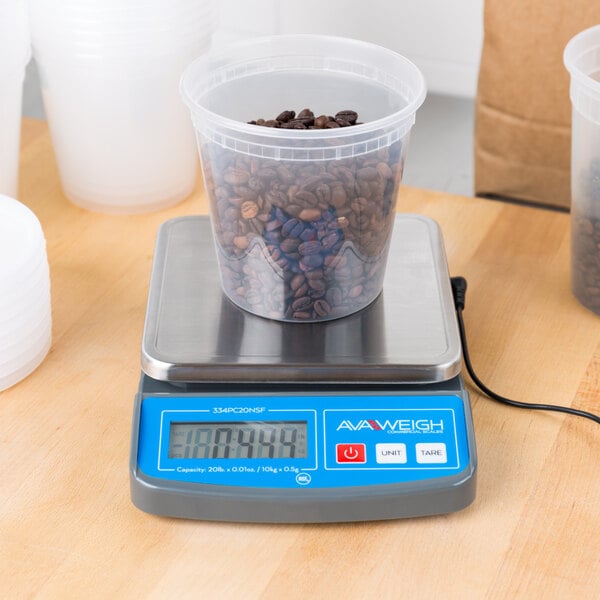
- Designed for accuracy and speed
- Easy-to-read digital displays
- Immediate response
- Some scales are connectable to printers
- Ability to purchase a scale measuring in the units desired: dual reading, imperial portion, or metric portion
- Some scales include the ability to set tare (tare is when the weight of the container is taken out of the measurement, getting net weight)
Portion Scale Features to Consider:
- Tower Display
- Waterproof
- Rechargeable Battery Pack
- Tare Function
- NSF Certified
- Counting Scale
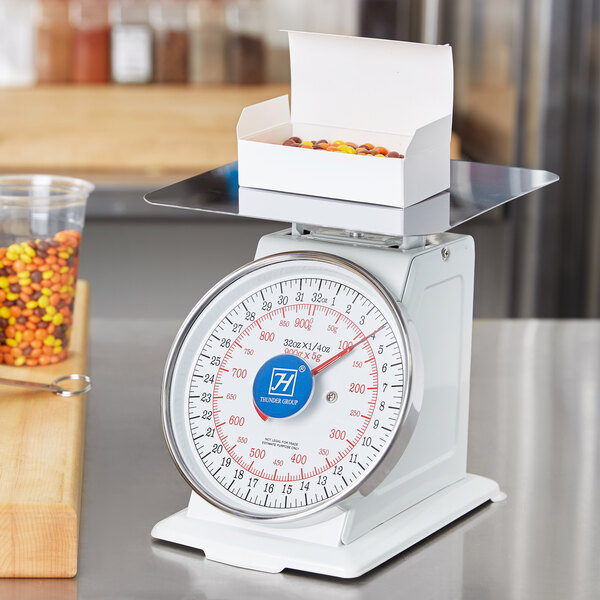
- Designed for versatility and portability
- Reliable - no electricity or battery power needed
- Ability to purchase a scale measuring in the units desired: dual reading, imperial portion, or metric portion
- Some scales include the ability to set tare (tare is when the weight of the container is taken out of the measurement, getting net weight)
Mechanical Scale Features to Consider:
- Rotating Dial
- Dishwasher Safe
- Platform Shock Absorber
- Tare Function
- NSF Certified
For commercial locations that calculate sale price based on weight, such as delis, markets, bakeries, or butcher shops, the best food scale is definitely a legal for trade scale. Keep in mind that any scale used with food must be NSF certified.
What Is a PLU?
PLUs, or Price Look-Ups, allow customers to take items like produce or meats and associate a specific dollar amount per pound to the item. For example, if you create a PLU for apples, the word "apple" and its price per pound will populate on the screen when you press the corresponding pre-programmed number on the scale.Legal for trade scales have varying PLU capacities. Some scales offer 10 programmable PLUs, while others can hold up to 4999 different programmable number combinations. Whatever the range capacity of your scale, PLUs will save you valuable time since you no longer have to manually type the price and name of the product every time you make a sale. Instead, you simply press the number associated with the product.
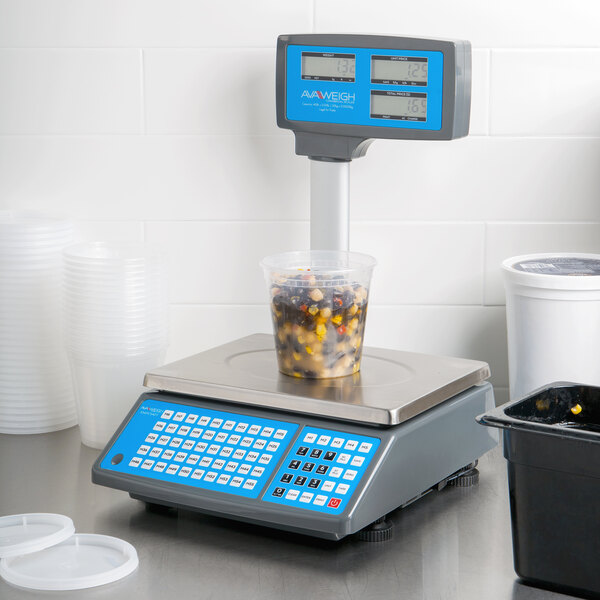
- Designed to be the most accurate scales available
- Easy-to-read digital displays
- Many models have programmable quick lookup keys
- Many models are connectable to printers
- Ability to purchase a scale measuring in the units desired: dual reading, imperial portion, or metric portion
Legal For Trade Scale Features to Consider:
- Tower Display
- Label Printing
- Rechargeable Battery
- NTEP Approved
- NSF Certified
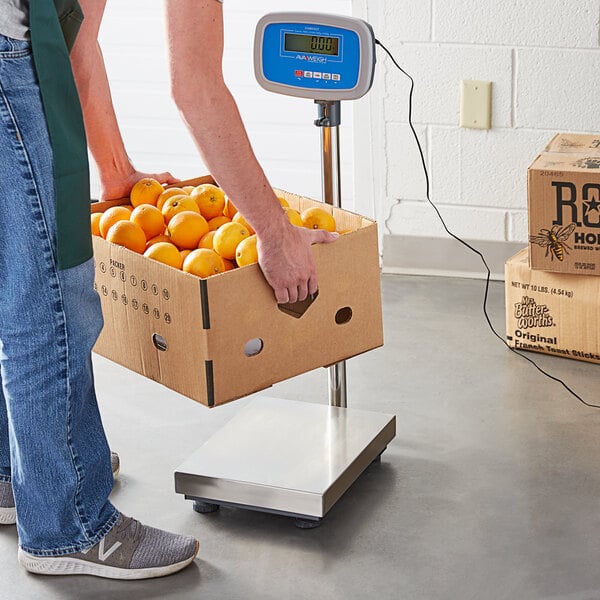
- Designed for durability and accuracy
- Weighing platform close to the ground - limited lifting required
- Many models can save and transfer inventory information to a computer
- Some models are connectable to printers
- Ability to purchase a scale measuring in the units desired: dual reading, imperial portion, or metric portion
- Some scales include the ability to set tare (tare is when the weight of the container is taken out of the measurement, getting net weight)
Receiving Scale Features to Consider:
Specialized Scales

Baker's Dough Scales:
Counterbalance scales often used for weighing ingredients and dough, making them a popular choice for bakeries and candy shops.
Hanging Scales:
Conveniently hang from fixtures for weighing fruits and vegetables, making them a popular choice for markets, produce stands, and grocery stores.
Pizza Scales:
Oversized platforms accommodate small to extra-large pizza crusts, and the auto tare function lets you reset the scale as you add new toppings.
The Importance of Choosing a Scale With the Right Increments
Related Resources
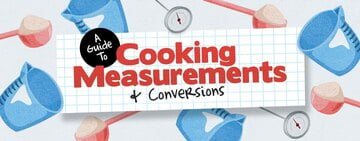
Cooking Measurement Conversion
In the chaos of a fast-paced, commercial kitchen, you might not have time to convert measurements and resize your recipes . Whether you're an experienced chef or training new staff, understanding measurement conversions helps you reduce mistakes so you can confidently cook or bake your favorite dishes. This guide contains all the tools needed to accurately measure and convert ingredients, ensuring that your recipes turn out perfectly every time. Shop All Measuring Spoons and Cups Use the following links to convert different cooking measurements: Kitchen Measuring Conversions Kitchen Measurements Chart Abbreviations for Cooking Measurements Liquid Measuring Cups vs Dry

Ways to Reduce Food Waste in Your Restaurant
Running a foodservice operation requires a lot of thinking. You have to order ingredients on time, balance your finances, and manage your staff amidst a world of other concerns. As important as it is to consider what food you're making, it's equally important to think about what happens to food that's left uneaten. According to Feeding America , America produces an estimated 72 billion tons of food waste each year. How to Reduce Food Waste in Your Restaurant If you're looking for food waste solutions and how to reduce restaurant food waste in your establishment, follow the steps below to get started: Click any of the tips below to read the section that interests you: Conduct a Food Waste Audit Seek Food Waste Solutions Use Alternative
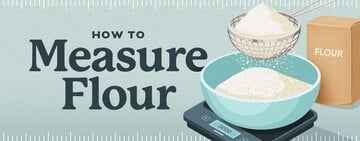
Measuring Flour for Baking
One of the most common cake mistakes made while baking is measuring flour incorrectly. It may seem simple to reach into the bag with a measuring cup but this typically results in scooping out way more flour than the recipe calls for. Using too much flour can make your baked goods dense and dry. Use our guide to learn how to properly measure flour to get consistent results every time. Shop Flour in Bulk How to Measure Flour Use the following video to learn how to measure flour correctly: How to Measure Flour With a Scale The best way to measure flour for baking is by using a portion scale . Flour compacts easily, so dipping a measuring spoon into the flour will lead to inconsistent results. A portion scale will allow you to measure accuratel
- Topics 1346
- Industrial 55
- Troubleshooting Guides 21
- Restaurant Management 128
- Bar Management 55
- Catering Tips 35
- Bakery Management 42
- Food Trucks & Concessions 49
- Advertising & Marketing 37
- Eco-Friendly Tips 11
- Facility Layout & Design 41
- Coffee Shop Tips 28
- Installation & Maintenance 51
- Janitorial & Pest Control 30
- Safety & Sanitation 88
- Startup Tips 104
- Menu Design 10
- Kitchen & Cooking Tips 81
- Hospitality Management 23
- Pizza & Sandwich Shop Tips 36
- Smallwares 37
- Food Prep 88
- Tabletop Items 17
- Disposables 22
- Calculators & Tools 6
- Consumables 52
- Warewashing & Laundry 18
- Cooking Equipment 90
- Food Storage & Refrigeration 51
- Beverage Equipment 34
- Office Supplies 6
- Resource Type
- In-Depth Articles272
- Buying Guides296
- How-Tos93
- Product Reviews77


